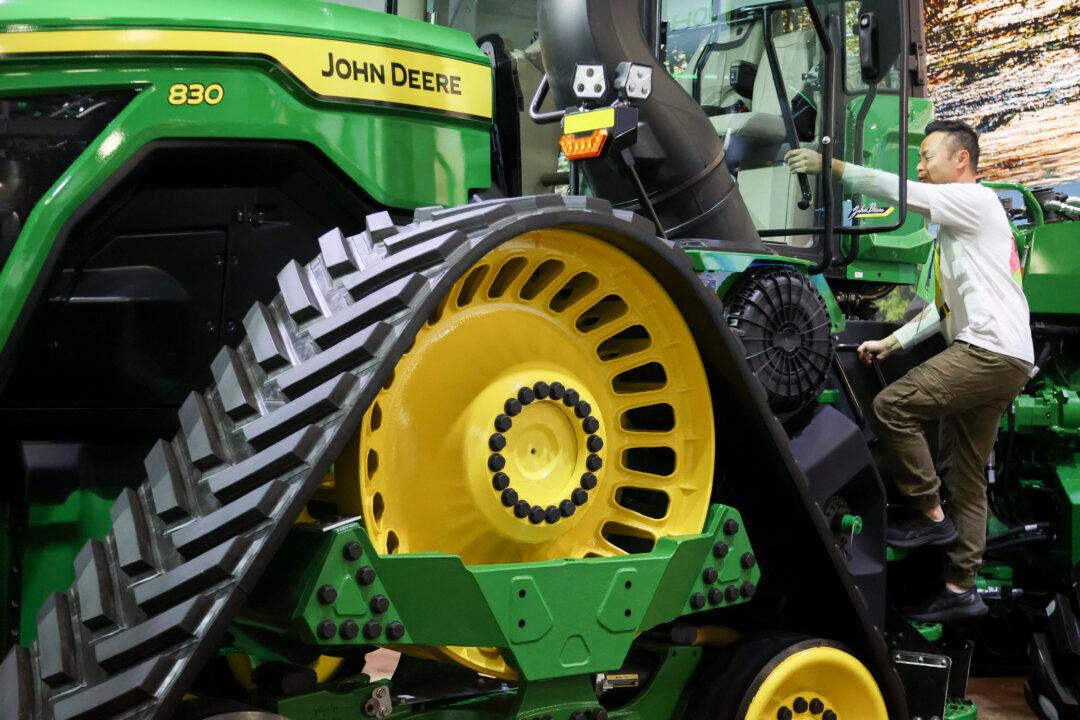John Deere’s revenue and earnings dropped in the second quarter of fiscal year 2025 due to a global decline in sales, but beat expectations. The company reaffirmed its guidance for the rest of the fiscal year, continuing to embrace local American manufacturing.
On May 15, the Moline, Illinois-based agricultural and construction equipment maker reported net income of $1.804 billion for the second quarter ended April 27, or $6.64 per share, exceeding market forecasts. That compares with net income of $2.370 billion, or $8.53 per share, for the same quarter a year earlier.
Net income was $2.673 billion, or $9.82 per share, for the first six months of the fiscal year, down from $4.121 billion, or $14.74 per share, for the same period last year.
Globally, net sales and revenue dropped 16 percent, to $12.763 billion, in the second quarter, also beating market forecasts.
“As we navigate the current environment, our customers remain our top priority,” said John May, chairman and CEO of John Deere. “I’m incredibly proud of our team’s execution this quarter, delivering exceptional performance despite challenging market dynamics.”
Meanwhile, the company kept its full-year revenue outlook at $4.75 billion to $5.50 billion, though slightly broader than the one provided in February. It also expects cash flow from equipment operations to remain between $4.5 billion and $5.5 billion, keeping its guidance steady despite market volatility.
“Despite the near-term market challenges, we remain confident in the future,” May said. “Our commitment to delivering value for our customers includes ongoing investment in advanced products, solutions, and manufacturing capabilities.
“Over the next decade, we will continue to invest significantly in our core U.S. market, underscoring our dedication to innovation and growth while focusing on remaining cost-competitive in a global market.”
John Deere’s shares rose 3.78 percent during the May 15 trading session. Over the past five years, the stock has risen nearly 310 percent, outperforming the S&P 500 Index, which has gained more than 106 percent over the same period.
Meanwhile, the company continues to embrace its American manufacturing heritage. It produces its products mostly at home, close to the farming markets it serves, with factories mostly in Iowa, Georgia, Illinois, Louisiana, and Wisconsin.
During the earnings call, May touted “Smart Industrial,” the company’s strategy of combining advanced technology with manufacturing.
“We will continue to invest capital robustly in R&D to bring these integrated solutions to market, enhancing our global competitiveness. I’m proud that this innovative work will build on our American roots, and we are prepared to invest $20 billion in the U.S.”
Meanwhile, the company noted that its profit margins surpassed projections despite tariff headwinds thanks to better-than-expected sales and lower production costs from efficiency gains in its material sourcing and factory operations.
That could change in the second half of the year, as global uncertainty continues to weigh on customer sentiment across business segments and markets.
“While the top end of our fiscal ‘25 outlook remains relatively unchanged from prior guidance, a fluid tariff environment has broadened our guidance range as we actively work to mitigate impacts to both our customers and Deere,” May said.







